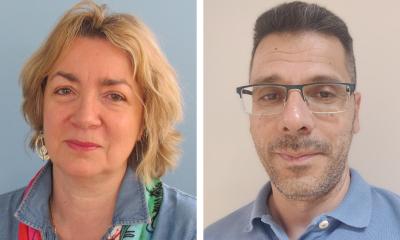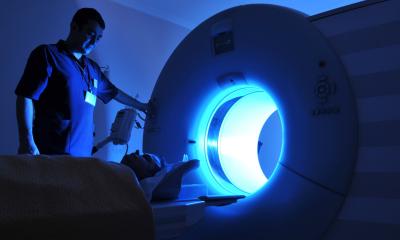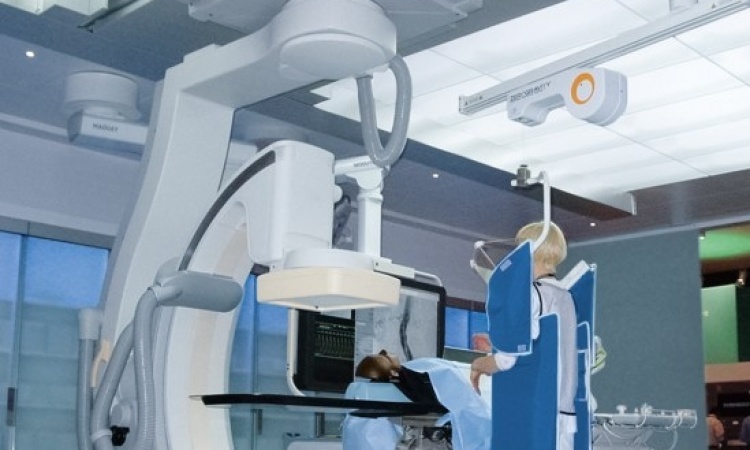
Photo: HiE/Behrends
Video • Virtual reality radiation protection training
VR gives ‘X-ray vision’ to radiographers-in-training
Exposure to ionising radiation is a major health concern for many interventional radiologists. The harmful rays, which can neither be seen nor felt, can be a source of constant unease, especially among radiographers in training. To help attain an understanding for radiation distribution in a clinical setting, experts tap into the potential of virtual reality (VR). At ECR 2022, Professor Louise Rainford talked about the benefits of diving into a digital operating theatre.
Article: Wolfgang Behrends
To enter the virtual operating theatre, the students wear an HTC Vive Pro headset and use hand controllers to interact with the 3D environment, based on a simulation tool by New Zealand-based company Virtual Medical Coaching. The participants have access to a virtual control panel, where they can adjust several relevant parameters, such as radiation intensity, beam collimation, height and weight of the patient. As part of the simulation, the students can not only change their own position, but also freely determine the location of staff and protective equipment within the room.
Video: James Hayes/Virtual Medical Coaching via YouTube
Immersive, interactive, self-directed
For Prof Rainford, who is Head of Radiography & Diagnostic Imaging within the University College Dublin School of Medicine, Ireland, the technology helps demonstrate the rather complex concept of radiation distribution in an easy-to-grasp way. In an immersive and interactive environment, students can try out various setups of staff and equipment within a virtual room. Upon the press of a button, the intensity of radiation is displayed, with a red centre indicating highest exposure – expanding outwards to safer surroundings visualised as yellow and greenish areas. ‘This is especially helpful for more visual learners, since the effect of different parameters can immediately be witnessed first-hand,’ the expert said. The self-directed nature of the exercise was described as another benefit.
Virtual reality is a great tool to build confidence for the real thing in a risk-free environment
Louise Rainford
The VR approach still has a few shortcomings: setting up the devices takes a bit of time, and some users have a hard time getting used to the VR headset – especially those with no prior virtual reality experience or those wearing glasses. Still, an evaluation of the learning method showed that the vast majority of participants not only found the VR experience instructive, but also enjoyable.1 ‘Virtual reality is a great tool to build confidence for the real thing in a risk-free environment’, said Prof Rainford, suggesting that immersive VR training should be used as an addition for existing curricula.
Publication:
22.08.2022










